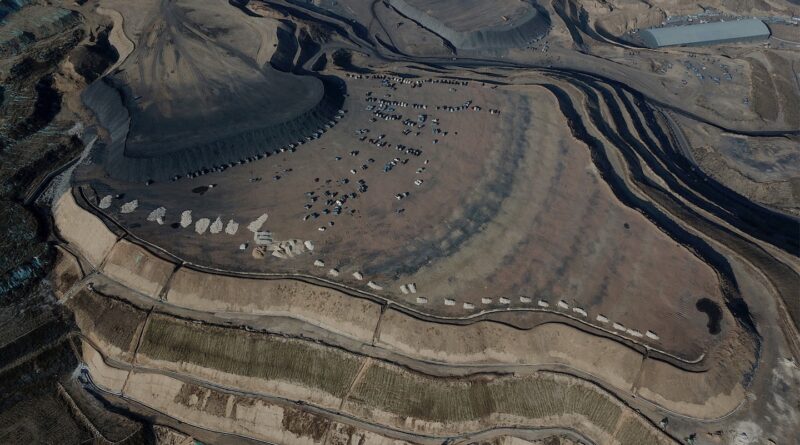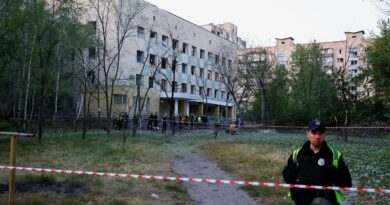Before China’s coal is even burned, its mines are warming the planet
And it helps explain why China — the world’s largest emitter — remains reluctant to set hard limits on the potent greenhouse gas that the International Energy Agency estimates is responsible for around 30 percent of global temperature rise since industrialization.
Beijing this month released its first plan to curb methane emissions, but didn’t commit to any specific targets, and agreed, jointly with the United States, to triple renewable energy by 2030. While the Biden administration touted the deal as a significant breakthrough, many climate experts consider the statements too weak.
Within the coal industry, China is “the single dominant country” with potential to dramatically reduce emissions, which is why many hoped they would set quantitative targets in the plan, said Drew Shindell, a professor of earth science at Duke University.
Reducing methane, he said, “is the strongest lever for the next few decades to slow down and mitigate the damages from climate change.”
As thousands of delegates gather at the U.N. Climate Change Conference in Dubai, methane — and particularly China’s contribution — will be a major point of contention, and a likely obstacle to any real breakthrough at COP28.
Reducing this gas from coal mines, oil and gas operations and agriculture is widely seen as the cheapest, fastest way to reduce emissions that are warming the planet. While carbon dioxide lasts longer in the atmosphere than methane and is much more abundant, methane gas is far more effective at trapping heat — roughly 80 times more potent over 20 years.
Paul Bledsoe, a former Clinton White House climate adviser who is now a lecturer at American University’s Center for Environmental Policy, underscored the lack of emissions targets in China’s delayed methane plan, originally promised during 2021 talks, as a worrying omission.
“China has promised methane cuts since Glasgow, yet now offers only monitoring, despite massive methane leaks from its coal mines,” he said, adding that “Beijing’s climate backtracking should be a key focus at COP28.”
U.S. climate envoy John F. Kerry has said that finding ways to reduce emissions faster across all greenhouse gases — not just carbon dioxide — is a focus of talks with China in Dubai. By working with China at talks, “we are going to be able to find a way to deal with the emissions much more rapidly, and also to include all greenhouse gases in the reduction efforts. That hasn’t been true up until now,” he told Japanese Broadcaster NHK this month.
In China, about 40 percent of methane comes from coal mines and 42 percent from livestock, rice paddies and other agricultural sources, according to estimates by Chinese researchers. Those sources are spread across the country and considered essential for Beijing’s energy and food security goals.
Coal mines are the most obvious choice for China to cut emissions, but it will be tough to get the industry on board. Unlike catching leaks from pipes, which is relatively cheap to do and allows companies to sell the captured gas, mining companies have minimal incentive to invest in expensive equipment to capture and use methane. Most see the gas primarily as a safety hazard best expelled and only monitor it to avoid accidents.
Along with India, Russia and Iran, China declined to sign onto a global methane pledge 150 countries have made to reduce global emissions by at least 30 percent from 2020 levels by 2030.
While the United States and European countries hope to press China to take methane more seriously in climate talks, Beijing is resistant to the appearance of caving to outside pressure, analysts warn. As Kerry was in Beijing to meet his Chinese counterpart, Xie Zhenhua, President Xi Jinping declared that China would decide how fast to transition away from fossil fuels without outside interference.
Xi, China’s most powerful leader in decades, has tried to position himself as a global leader on environmental issues. In 2020, he announced a plan to hit peak carbon dioxide “before 2030” and reach “carbon neutrality” by 2060, spurring a flurry of activity from local governments and polluting industries.
But he has reversed course as that ambition clashed with concerns about domestic energy supply and diplomatic jockeying with the United States. Chaos in international energy markets from Russia’s invasion of Ukraine and power shortages that shut down Chinese factories inflamed long-standing concerns in Beijing about the security of electricity sources.
Officials adopted a new mantra: build before you break. China, they said, needs more of everything — both fossil fuels and renewables — before it can prioritize cutting emissions.
Notwithstanding world leading installations of wind and solar power, Xi declared that coal must remain the “mainstay” of the power sector in the near term.
Climate diplomacy with the United States was also interrupted by a flare up in tensions. Beijing suspended talks last August in anger over a visit by then-House Speaker Nancy Pelosi to Taiwan, the island democracy that the Chinese Communist Party claims as its territory.
Because of fallout from that trip — and also concerns on how to ensure power supplies — Chinese officials delayed the methane plan, according to two individuals briefed on internal Chinese discussions.
The document would have been ready for last year’s climate talks, as China’s promised at Glasgow, and it was not materially updated before the release nearly a year later, said the individuals, who spoke on the condition of anonymity to discuss a sensitive matter.
Even though the “watered down” documents was a disappointment, without its release and the resumption of U.S.-China climate talks “this COP would have been a disaster,” said Yan Qin, a carbon analyst at data provider Refinitiv.
Getting China to pay close attention to atmosphere-warming gases beyond carbon dioxide may be one area where the United States appears to still have leverage.
“China does not want to be seen as giving in to U.S. demands on climate, but there can always be exceptions,” said Li Shuo, incoming director of China Climate Hub at the Asia Society Policy Institute.
China is in need of expertise and support in controlling coal mine gases, so methane may be one of those exceptions. “Basically the U.S. has power to keep it on the agenda,” Li said.
Chinese leaders in general are way of multilateral obligations, and are also wary of making promises they cannot deliver upon. In addition, they do yet have a firm handle on the scale of the problem, experts said.
Estimates using satellite imagery suggest that the country accounted for about a tenth of the global total in 2021. But a push to expand mining may have significantly increased emissions since then, according to estimates from Global Energy Monitor, a nongovernmental organization that tracks fossil fuels infrastructure.
Because of a lack of know-how and technology to measure methane, leaving targets out of the plan was the only “practical” option, said Zhang Yuzhong, assistant professor at Westlake University and head of the Atmospheric Environmental Research Lab.
“For the last decade, everyone has focused attention on monitoring and verification of air pollution, but when it comes to methane people aren’t even thinking about it as a greenhouse gas,” he said.
The focus on avoiding mining accidents may have made the industry adopt habits that are good for safety but bad for the environment.
To meet requirements for extremely low methane concentrations, many mines opt to pump air into the shaft and “deliberately diluted the methane to avoid having to deal with it,” said Hanling Yang is a senior director of energy transition-Asia at the Environmental Defense Fund.
The problem isn’t how to capture methane; it’s creating financial and policy incentives so the coal industry sees the gas as a resource, not a waste product, said Sabina Assan, an analyst at Ember, an environmental nonprofit. “The technology is all there. It’s been there for the past 25 years,” she said.




